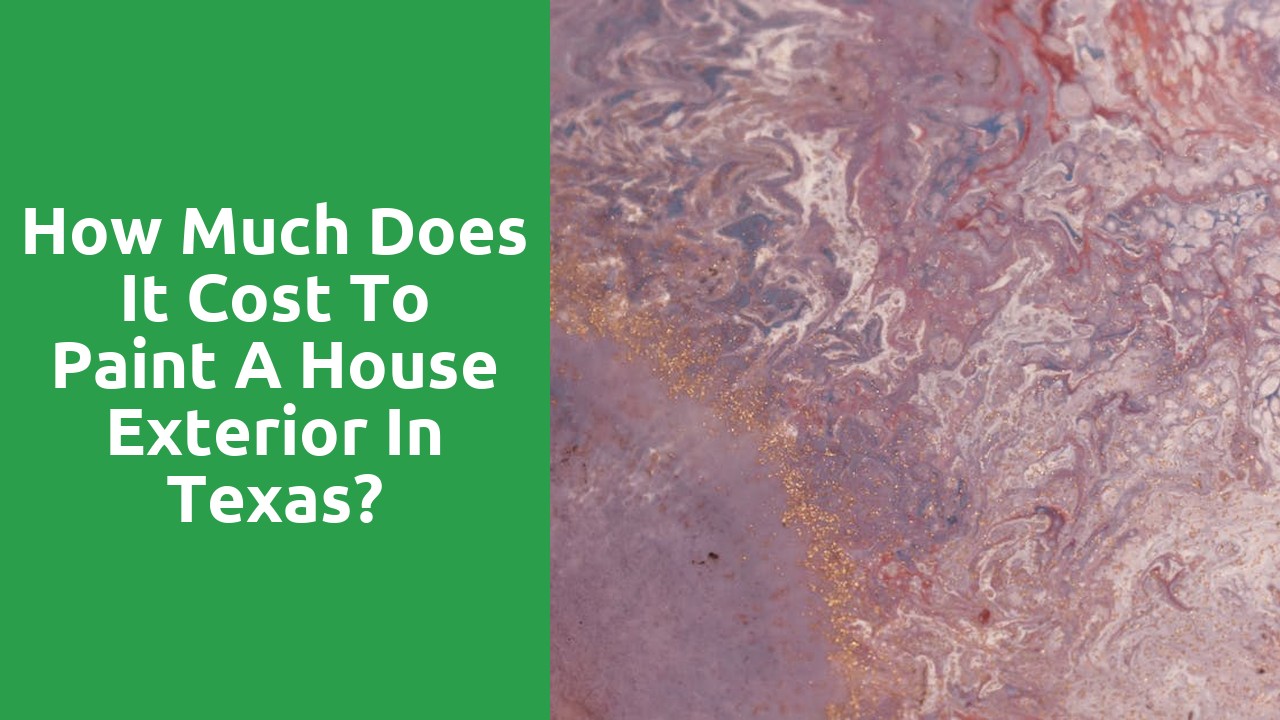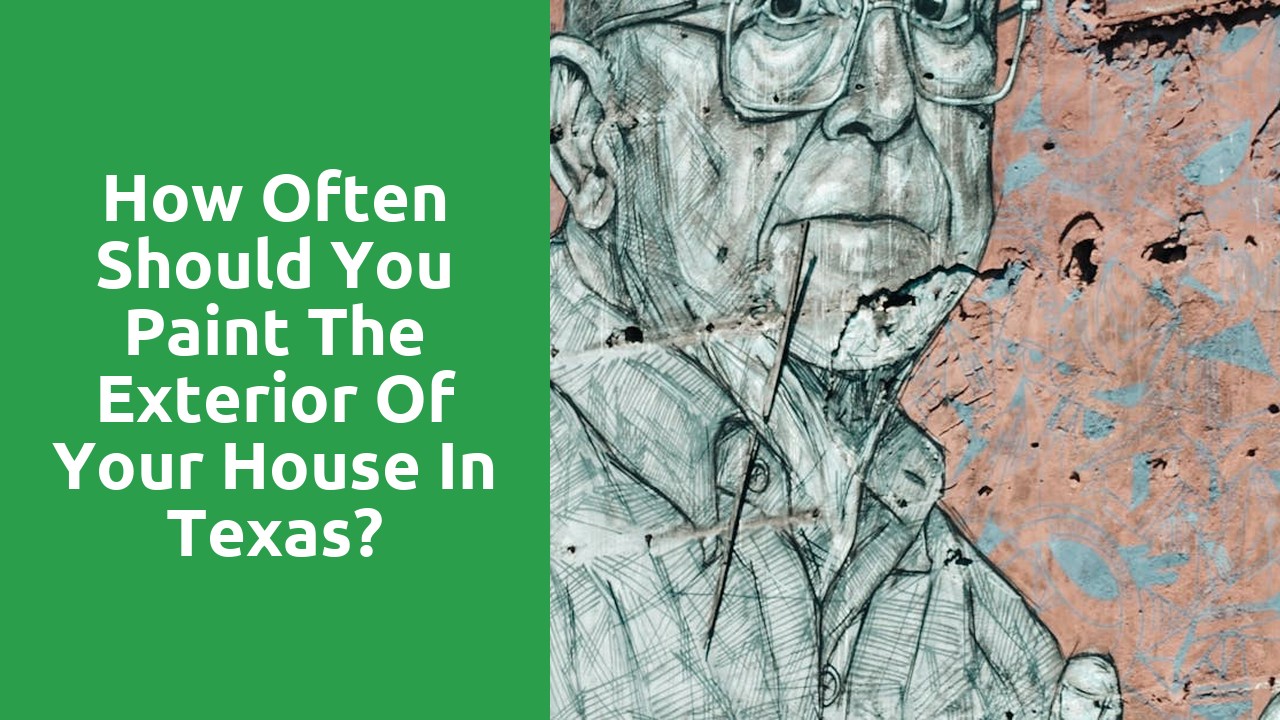
Exterior Painting
Painting Services Cypress TX offers top-notch exterior painting services to enhance the appearance and protection of your home or business. Their team of skilled professionals uses high-quality materials and proven techniques to deliver a flawless finish that withstands the test of time. Whether you want to refresh your property's curb appeal or protect it from harsh weather conditions, they have the expertise to meet your needs. From thorough surface preparation to meticulous application, Painting Services Cypress TX ensures a lasting and beautiful result that exceeds your expectations. Trust them to transform your exterior space with precision and care.
Exterior Paint Application Methods
When it comes to exterior paint application methods, there are various approaches that homeowners can consider to give their homes a fresh and vibrant look. One common method is brush painting, which involves using a paintbrush to carefully apply paint to the exterior surfaces of the house. This method allows for precision and control, making it ideal for intricate areas and detailed work.
Another popular technique is using a paint roller, which can help cover large areas more quickly and efficiently compared to a paintbrush. Paint rollers are especially useful for smooth surfaces like siding or stucco walls. Additionally, spraying is a method that can be utilized for larger surfaces or areas that require a more even application of paint. This method is efficient and can provide a smooth finish when done correctly. Each method has its own advantages, so it's important to choose the one that best suits the specific needs of the project at hand.
Different Approaches for Applying Exterior Paint
When it comes to applying exterior paint, there are several approaches that homeowners can consider based on their preferences and the desired outcome. One common method is the traditional brush and roller technique, which allows for precise application and control over the paint coverage. This method is often used for detailed surfaces and trim work that require careful attention to detail.
Another popular approach is using a paint sprayer, which provides a faster and more efficient way to cover large areas such as siding and fences. While a paint sprayer can save time, it may require more preparation to protect surrounding surfaces from overspray. It's essential to choose the right technique based on the type of surface being painted and the overall project goals to achieve a professional and long-lasting finish.
Dealing with Exterior Paint Issues
Dealing with exterior paint issues can be a frustrating part of any painting project. One common problem is peeling paint, which can be caused by moisture issues or poor adhesion. To address this, it's essential to thoroughly scrape and sand the affected areas, prime them, and apply a new coat of paint.
Another issue that homeowners often face is fading paint color due to exposure to sunlight. To combat this, consider using paint with UV protection and regularly cleaning the exterior walls to prevent dirt buildup that can further contribute to color fading. Additionally, applying a fresh coat of paint every few years can help maintain the vibrancy of the colors and protect the exterior surfaces of your home.
Common Problems and Solutions in Exterior Painting
One common issue in exterior painting is peeling paint. This can be caused by poor adhesion of the paint to the surface, moisture problems, or using low-quality paint. To solve this problem, you'll need to properly prepare the surface by scraping off any loose paint, sanding the area, and using a high-quality primer before applying a new coat of paint. It's important to address the root cause of the peeling to prevent it from happening again in the future.
Another challenge that homeowners often face is fading paint. Exposure to sunlight, harsh weather conditions, and low-quality paint can all contribute to the fading of exterior paint. To combat this issue, consider using a paint that is specifically formulated to resist fading. Additionally, you can apply a clear coat or sealant over the paint to provide extra protection against UV rays and other elements that can cause fading. Regular maintenance and touch-ups can also help prolong the vibrancy of your exterior paint job.
Cleaning Up After Exterior Painting
After completing the exterior painting of your home, it is crucial to properly clean up to ensure a professional finish and maintain the longevity of the paint job. Begin by carefully removing all painter's tape from surfaces such as windows, trim, and doors. Peel off the tape at a 45-degree angle to prevent any paint from chipping or peeling off with it.
Next, gather all used paintbrushes, rollers, and trays for cleaning. If you used latex paint, wash your tools with warm, soapy water. For oil-based paint, you will need to clean your brushes and rollers with paint thinner or mineral spirits. Once cleaned, allow the tools to dry thoroughly before storing them for future use. Dispose of any leftover paint in accordance with your local regulations, and remember to clean any paint spills or splatters promptly to avoid permanent stains.
Steps to Properly Clean Up After Painting the Exterior of Your Home
After completing the exterior painting of your home, it is crucial to clean up properly to maintain the beauty of your freshly painted surfaces. Begin by carefully removing painter's tape from windows, trim, and other surfaces. Peel off the tape slowly and at a slight angle to prevent any paint from peeling off with it. Dispose of the used tape responsibly by gathering it up and placing it in the trash.
Next, gather all your painting supplies and equipment such as brushes, rollers, and paint trays. Thoroughly clean them with soap and warm water to remove any paint residue. You can also use a paint comb to ensure that all dried paint is removed from the bristles of your brushes. Once everything is clean, allow them to air dry before storing them away for future use. By following these simple steps, you can ensure that your exterior painting project is completed to the highest standard and that your painting tools are well maintained for your next project.
FAQS
How often should I repaint the exterior of my house?
The frequency of repainting the exterior of your house depends on factors such as the type of paint used, climate conditions, and wear and tear. In general, it is recommended to repaint every 5-10 years.
What are the common problems that can occur during exterior painting?
Common problems during exterior painting include peeling, cracking, blistering, and fading of paint. These issues can be caused by improper surface preparation, low-quality paint, or environmental factors.
How can I prevent paint peeling on the exterior walls?
To prevent paint peeling on exterior walls, make sure to properly clean and prepare the surface before painting, use high-quality paint and primer, and apply the paint in the right weather conditions following the manufacturer's instructions.
Is it necessary to clean up after exterior painting?
Yes, it is essential to clean up after exterior painting to maintain the appearance of your home and prolong the life of the paint. Proper cleanup includes removing paint drips, cleaning brushes and tools, and disposing of paint cans responsibly.
What are the different methods for applying exterior paint?
The different methods for applying exterior paint include brushing, rolling, and spraying. Each method has its advantages and is suitable for different surfaces and painting projects. It is important to choose the right method based on your specific needs and preferences.


